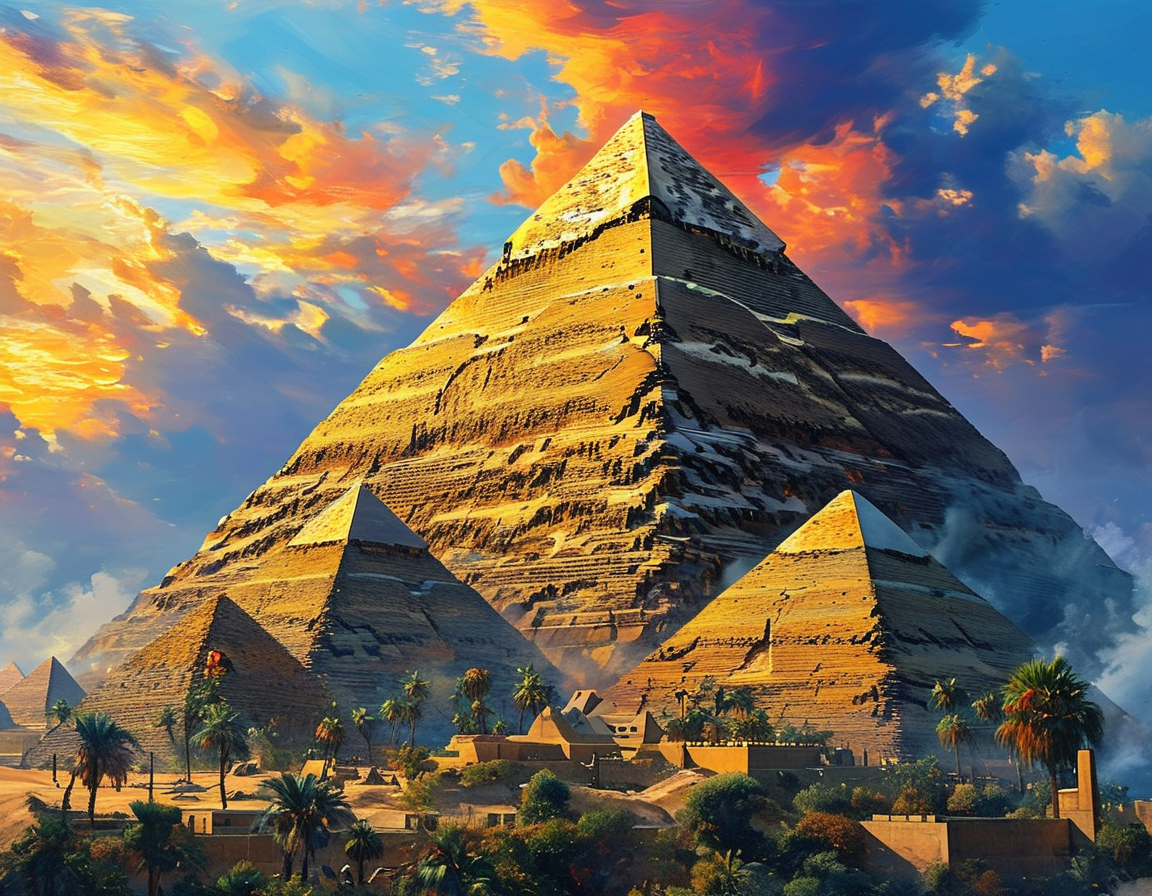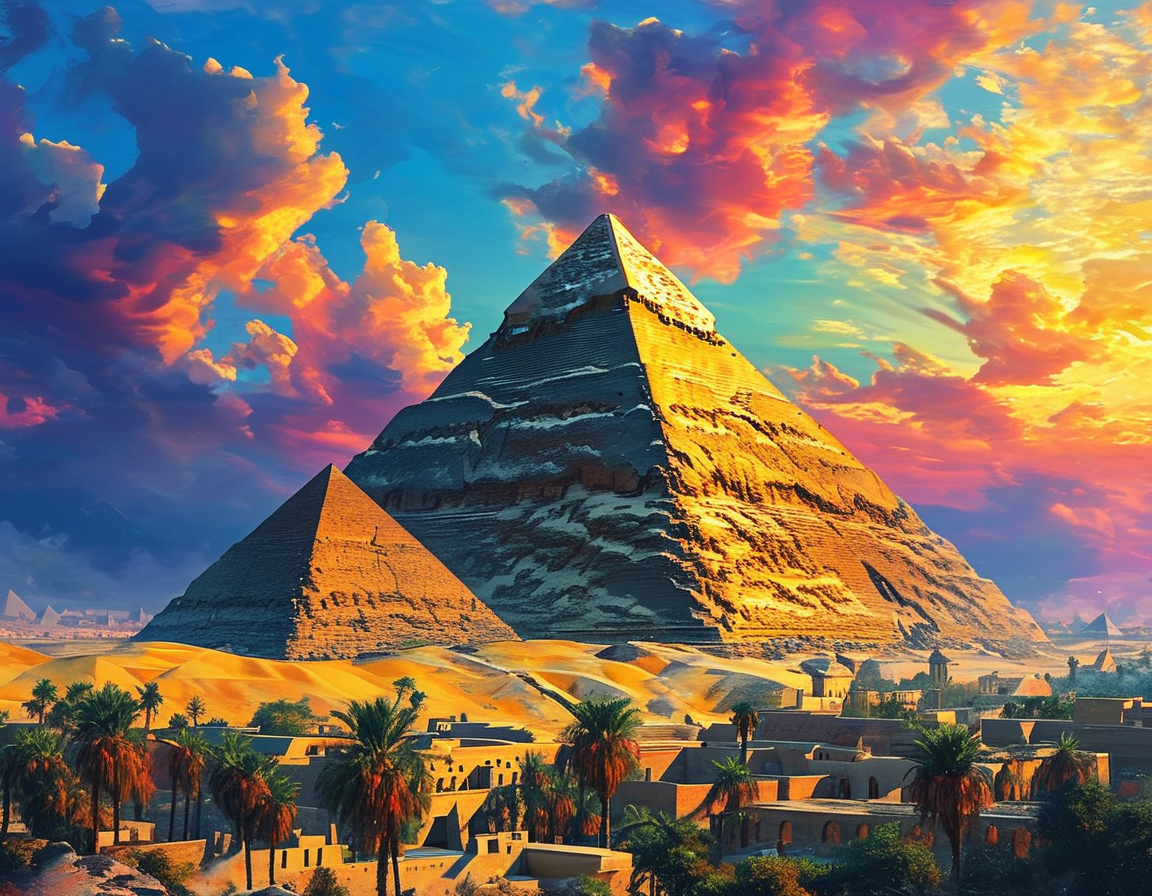Cultural Celebrations and Festivals
Egypt is a land of vibrant festivals. These events honor both ancient and modern traditions. Eid al-Fitr and Eid al-Adha are just two examples. During these celebrations, you see families come together in joy. It’s a testament to the resilience of Islamic traditions here.
Sham El-Nessim is particularly fascinating. This ancient spring festival has roots that stretch back millennia. Every spring, Egyptians celebrate it with picnics and outdoor fun. Families gather in gardens, sharing meals that reflect time-honored recipes. The mix of ancient customs and modern festivities makes it special.

It’s not just celebrations that matter. Egypt’s culture pulses with life. It’s a canvas where history and modernity meet. Festivals showcase this continuity beautifully, reminding everyone of their rich heritage. Amidst the hustle and bustle, these events provide a moment to pause and reflect.
Architecture and Art
When you wander through Egypt, the architectural wonders are striking. The pyramids and temples are more than just relics; they are inspirations. Modern buildings often draw from these ancient designs. This creates a fascinating dialogue between the past and present.
Artists today still look back at their roots. There’s an undeniable connection, a thread that runs through time. Contemporary Egyptian artists incorporate traditional motifs in their work. It’s a way of keeping the essence of ancient creativity alive. This blend of old and new tells stories—stories that resonate with both locals and visitors.

You see this in murals and sculptures across cities. This artistic fusion offers a fresh take on age-old traditions. It asks the question: How do we honor the past while paving the way for the future? Through this lens, Egypt’s modern art scene emerges as vibrant and dynamic.
Language and Literature
Language is a powerful tool for preserving culture. In Egypt, Arabic thrives, steeped in ancient scripts. This linguistic heritage shapes communication every day. But literature extends the conversation further, reaching deep into the heart of Egypt’s identity.
Modern Egyptian writers consistently draw from ancient narratives. They weave together legends and contemporary issues, creating a rich tapestry of stories. Just think about the myths of Osiris or the grandeur of the Nile; they still resonate today. The themes of love, life, and mortality remain timeless.

Writers ask: How can ancient tales inform our modern existence? This connection fosters a love for literature in young Egyptians. It encourages them to explore their roots while engaging with the present.
Religious Practices
Religion is a cornerstone of Egyptian life. While Islam is predominant, the echoes of ancient beliefs linger. Ancient rituals and customs infuse modern religious practice with depth. For instance, the concept of mummification, though historical, nurtures a respect for life and death.
Celebrations during Ramadan reflect a profound sense of community. People share iftar meals, echoing the hospitality that’s central to Egyptian culture. It’s fascinating to see how past practices soften the rigidity of modern rituals.
This blend of ancient and modern religious practices raises thought-provoking questions. How do we keep these traditions alive? Egypt’s answer lies in the heart of its people, who carry on the legacy with pride.
Social Customs and Traditions
Social customs in Egypt are deeply rooted. The spirit of hospitality shines brightly; it’s almost sacred. Inviting someone into your home means sharing your life. This practice breeds personal connections across generations.
Every meal shared is a celebration of relationships. Think about the joy of gathering over food. It’s where stories are exchanged, laughter heard, and connections forged. Traditional crafts also thrive, echoing skills of ancient artisans.
While technology evolves, these customs remind us of our humanity. They provoke the question: what does it mean to be truly connected? In a world that races ahead, Egypt’s timeless values offer a meaningful balance, drawing on both ancient wisdom and modern sensibilities.
Conclusion
In summation, modern Egypt stands as a beacon of cultural continuity. By embracing ancient traditions while adapting to contemporary life, it paints a picture of resilience. The interplay between old and new is not merely nostalgic. It’s a living testament to the spirit of the Egyptian people.
The vibrant fabric of Egyptian culture invites everyone to partake in its story. The challenge remains: how do we ensure these traditions thrive? Egypt’s journey forward, deeply rooted in its past, offers a glimpse into a future rich in culture and identity.




